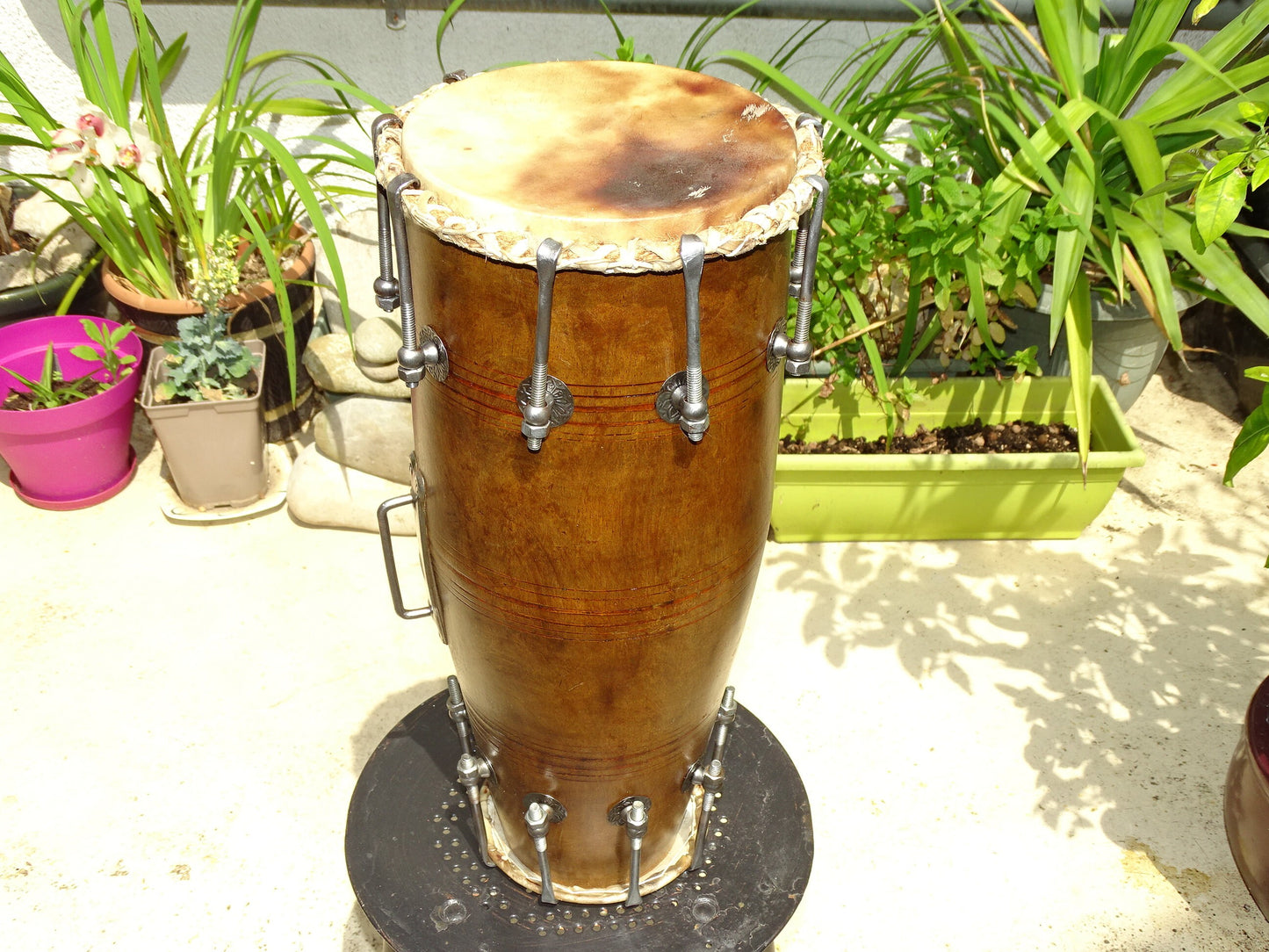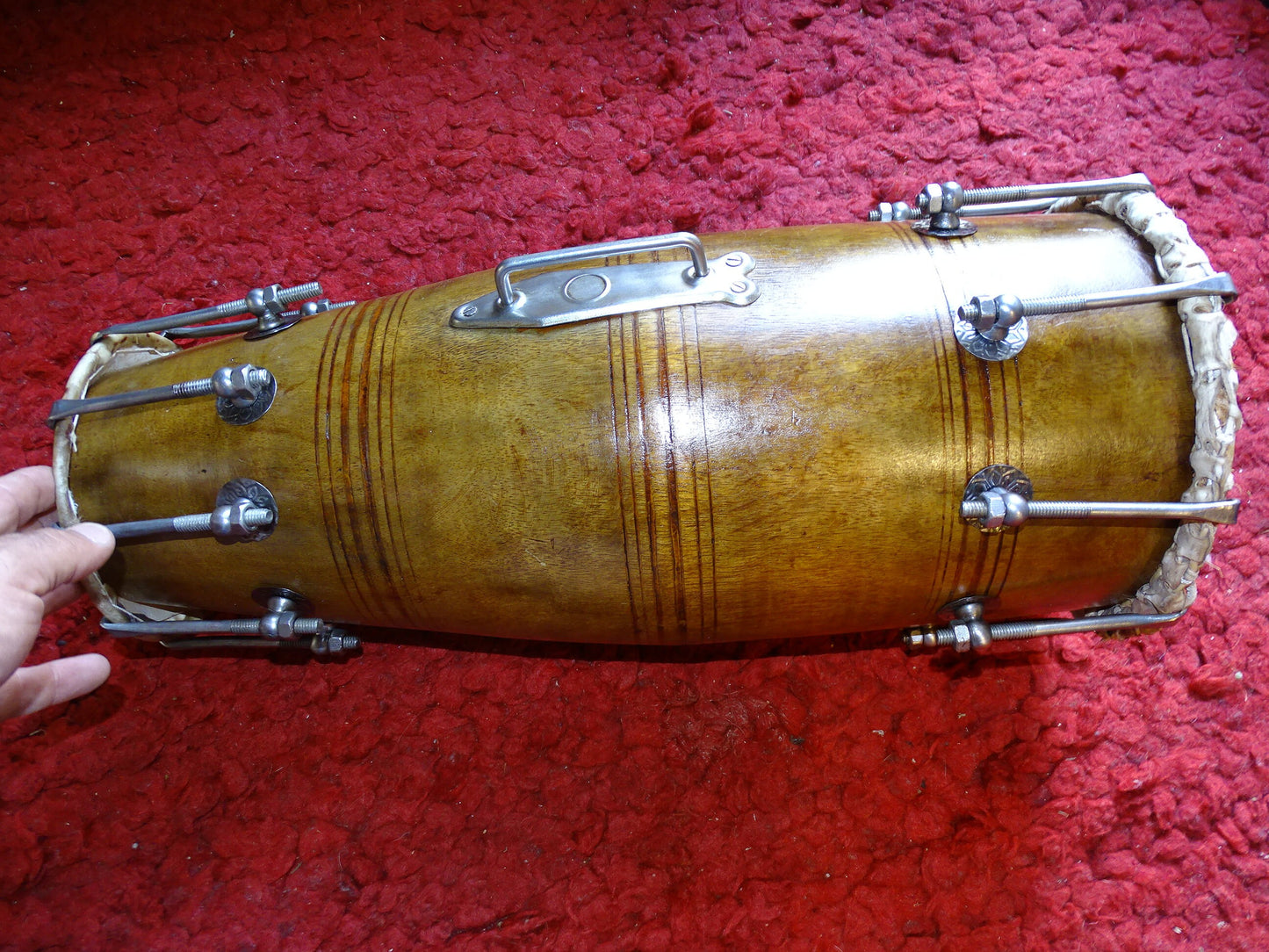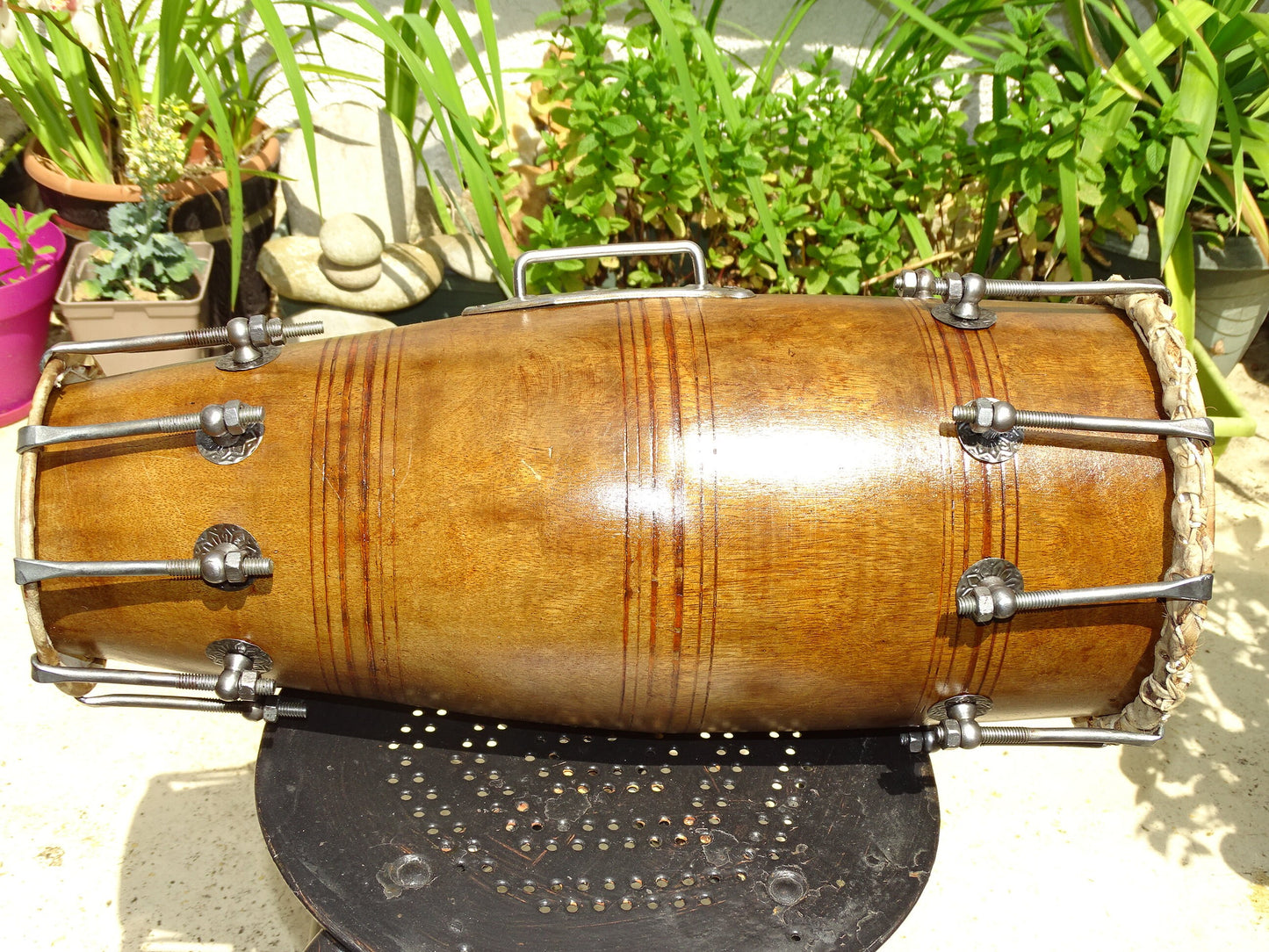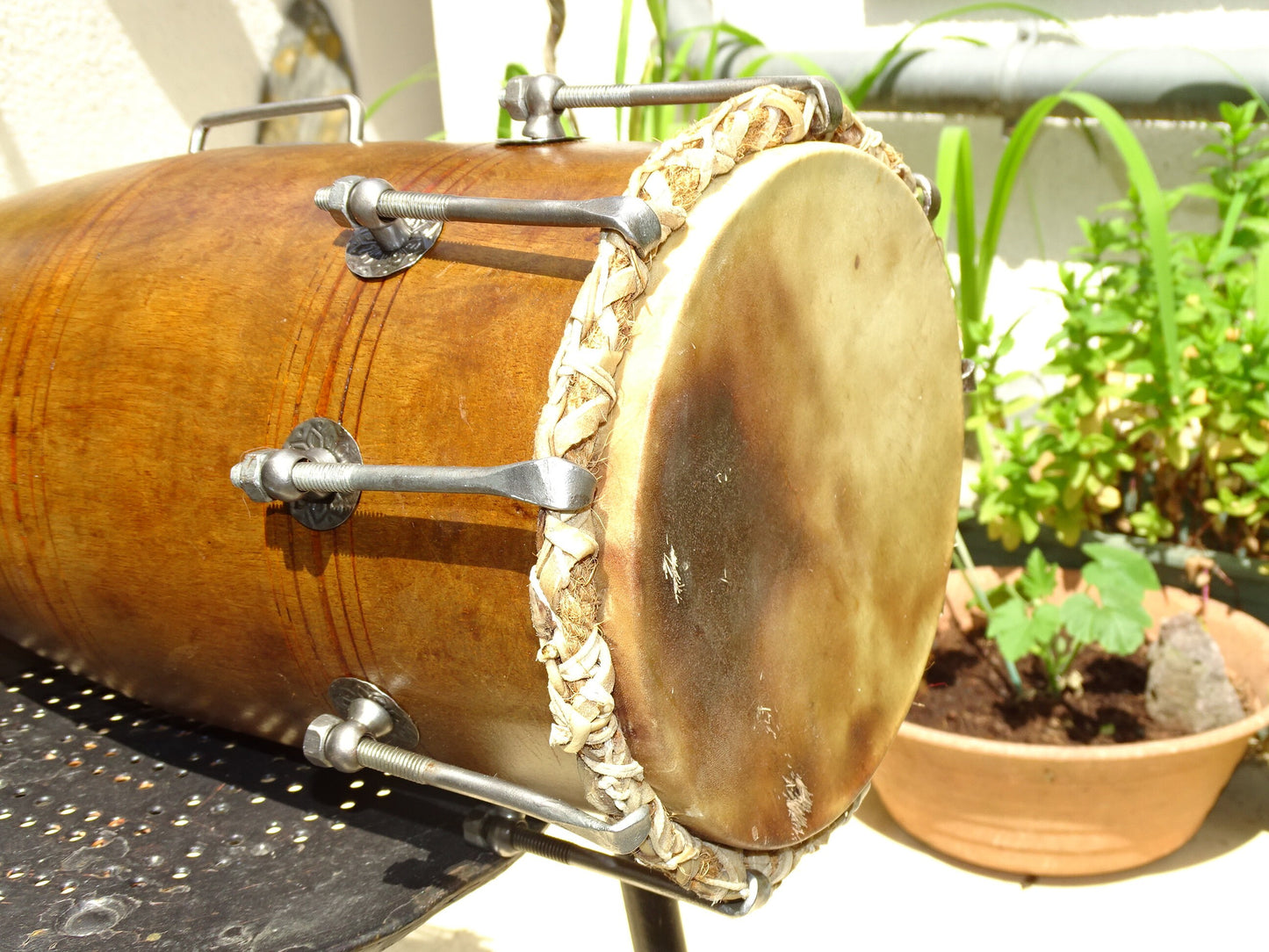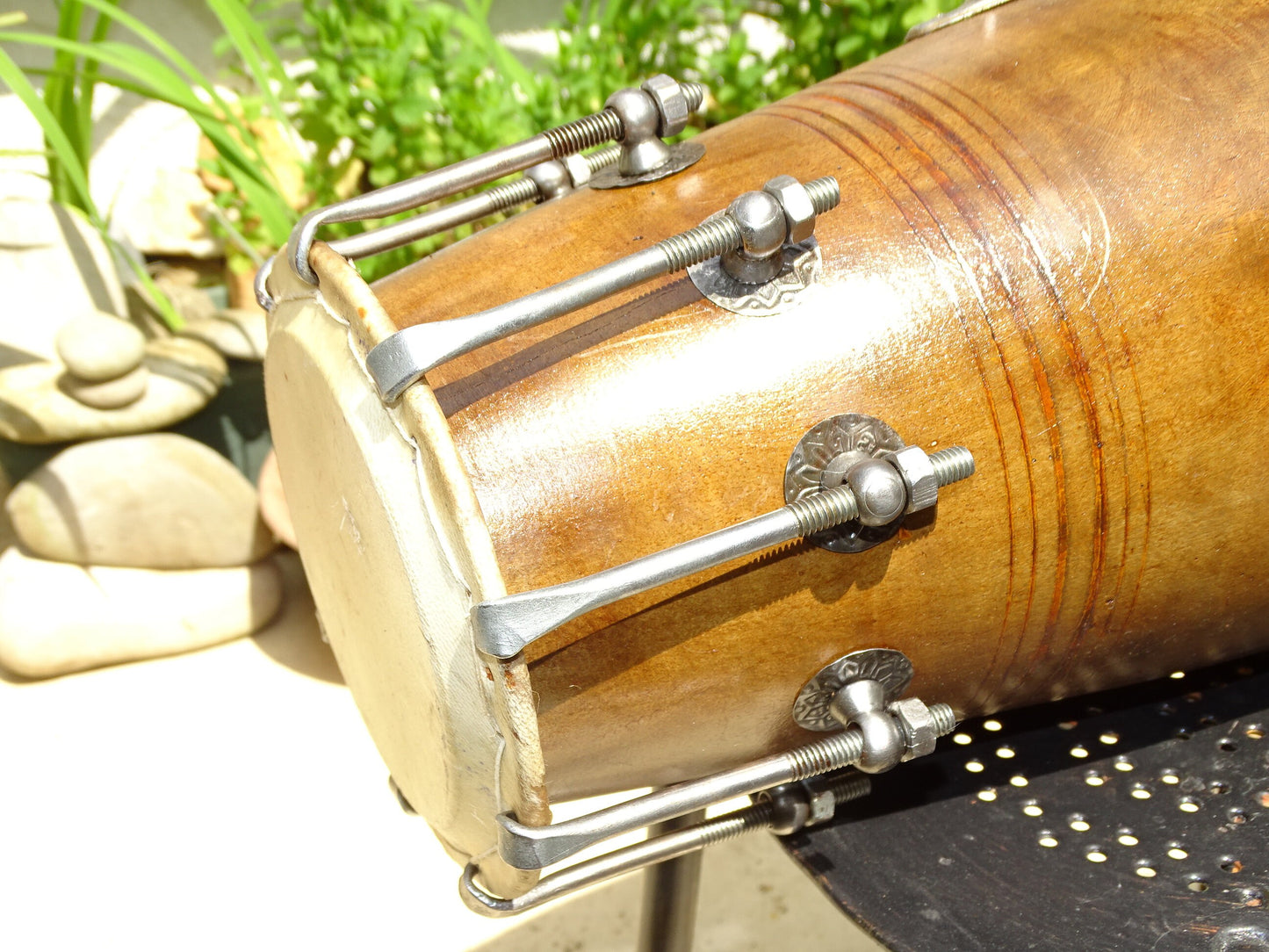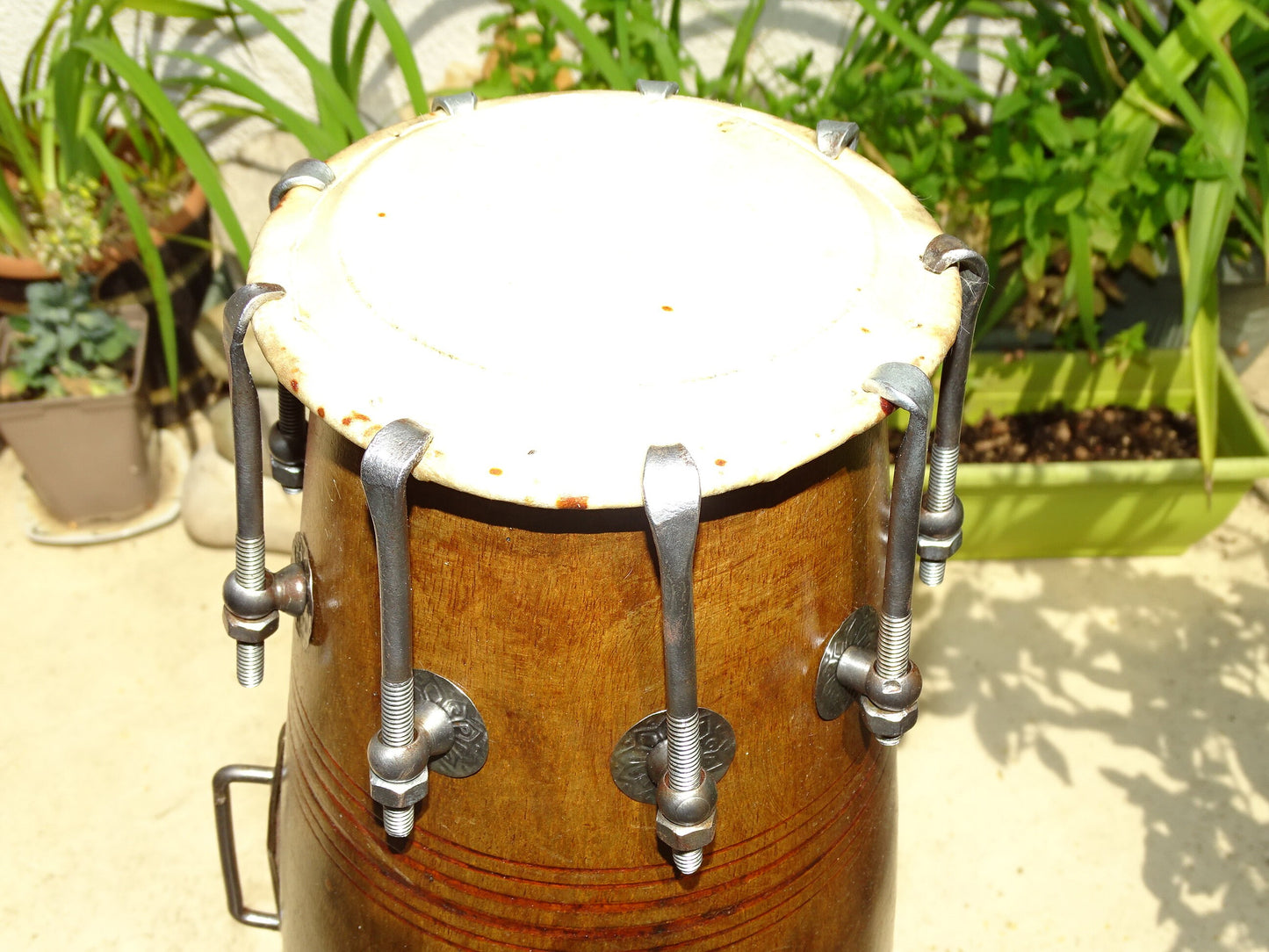Ancient Indian percussion instrument (ancestor of the tabla) Dholak or Mridangam - 53cm high x 24cm diameter - Superb and admirable piece!
Ancient Indian percussion instrument (ancestor of the tabla) Dholak or Mridangam - 53cm high x 24cm diameter - Superb and admirable piece!
Couldn't load pickup availability
- ✧─────✧
About the product:
→ Name/Type: Dholak, Mridangam - Ancient Indian percussion (Ancestor of the tabla)
🌍 Origin: North India
🪘 Family: Percussion – Membranophone
📐 Dimensions: ± 53 centimeters high x 24 centimeters in diameter
⚖️ Weight: ± 5,700 grams
🧬 Material: Wood, metal and goatskin
🎶 Sound type: Clear, warm and bright
📦 Packaging: Sold individually
🎁 Ideal as a gift or a treat for yourself!
👉 The Mridangam and the Pakhawaj are considered the direct predecessors of the tabla.
The Tabla is believed to have emerged in the 13th century or later, probably when the Pakhawaj (inspired by the Mridangam) was divided into two separate drums to meet the needs of Indo-Persian music.
The Dholak, simpler and more popular, represents a parallel folk version of the same double-skin principle.
📋 Fact sheet on Indian percussion:
| Instrument | Family | Description / Note | Game technique | History / Miscellaneous Information |
|---|---|---|---|---|
| Dholak | Percussion | Folk and classical drum from northern India | Played with the hands, right hand for the high note, left hand for the low note | Used in bhajans, qawwalis and folk dances. Ancient origin, accompanies songs and dances. |
| Mridangam | Percussion | Classic drum from South India | Played with fingers and palms on different parts of the skin | A central instrument in Carnatic music, used in temples and classical performances. Ancestor of the tabla. |
| Tabla | Percussion | Double drum from northern India | Played with fingers and palms on dayan (high) and bayan (low) | Appeared in the 18th century. Key to Hindustani music and popular/fusion music. |
| Pakhawaj | Percussion | Classical drum from northern India | Played with both hands, precise strokes for complex rhythms | Ancestor of the tabla, used in dhrupad music. Cylindrical wooden structure with skins on both sides. |
| Khol / Mridanga | Percussion | Trapezoidal drum from Bengal | Played with the hands, with distinct high and low tones. | Used in devotional songs (kirtans, bhajans). Traditionally made of wood and leather. |
| Ghatam | Percussion | Terracotta instrument | Played with hands and fingers, striking different parts to modulate the sound | Originating in South India, used in Carnatic music. Rounded shape producing resonant tones. |
| Khanjira | Percussion | Small frame drum | Played with the fingers and palm | Drum from South India used in Carnatic music. Very mobile, high-pitched and vibrant tone. |
| Morsing | Percussion | Mouth harp / Jaw harp | Played by pinching the metal strip with a finger while modulating the mouth | Used in Carnatic music as a rhythmic accompaniment, often with mridangam or ghatam. |
- ✧─────✧
A question? A comment? | Order and delivery information
A question? A comment? | Order and delivery information
⋯⋯⋯⋯⋯⋯⋯⋯⋯⋯⋯⋯⋯⋯⋯⋯⋯⋯⋯⋯
📞 Customer service available from Tuesday to Saturday , from 10am to 7pm (French time)
- 🇫🇷 From France: 06 51 85 38 18
- 🌍 From abroad: +33 6 51 85 38 18
- 💬 Live chat: via the bubble in the bottom right corner of your screen
- 📧 Email : available 24/7 – we respond quickly!
⋯⋯⋯⋯⋯⋯⋯⋯⋯⋯⋯⋯⋯⋯⋯⋯⋯⋯⋯⋯
🔖 Order today and receive your package within 2 to 10 days depending on your continent.
💳 Secure payment & certified by SSL encryption 🔐
↩️ Returns & exchanges possible within 14 to 30 days after receipt.
🌍 Shipping costs are calculated automatically based on your shipping address at checkout.
📦 Country of shipment: France 🇫🇷
Share
